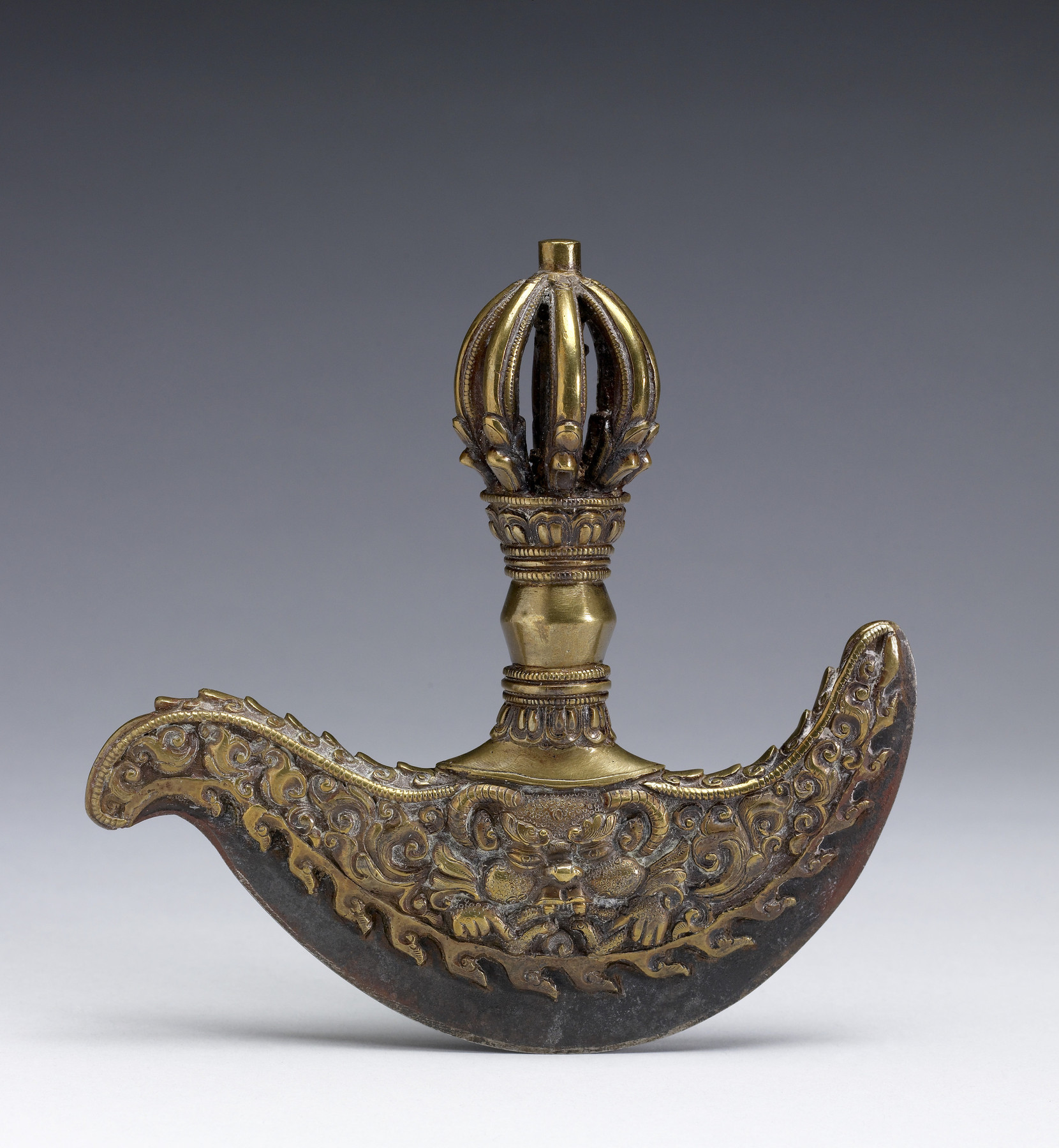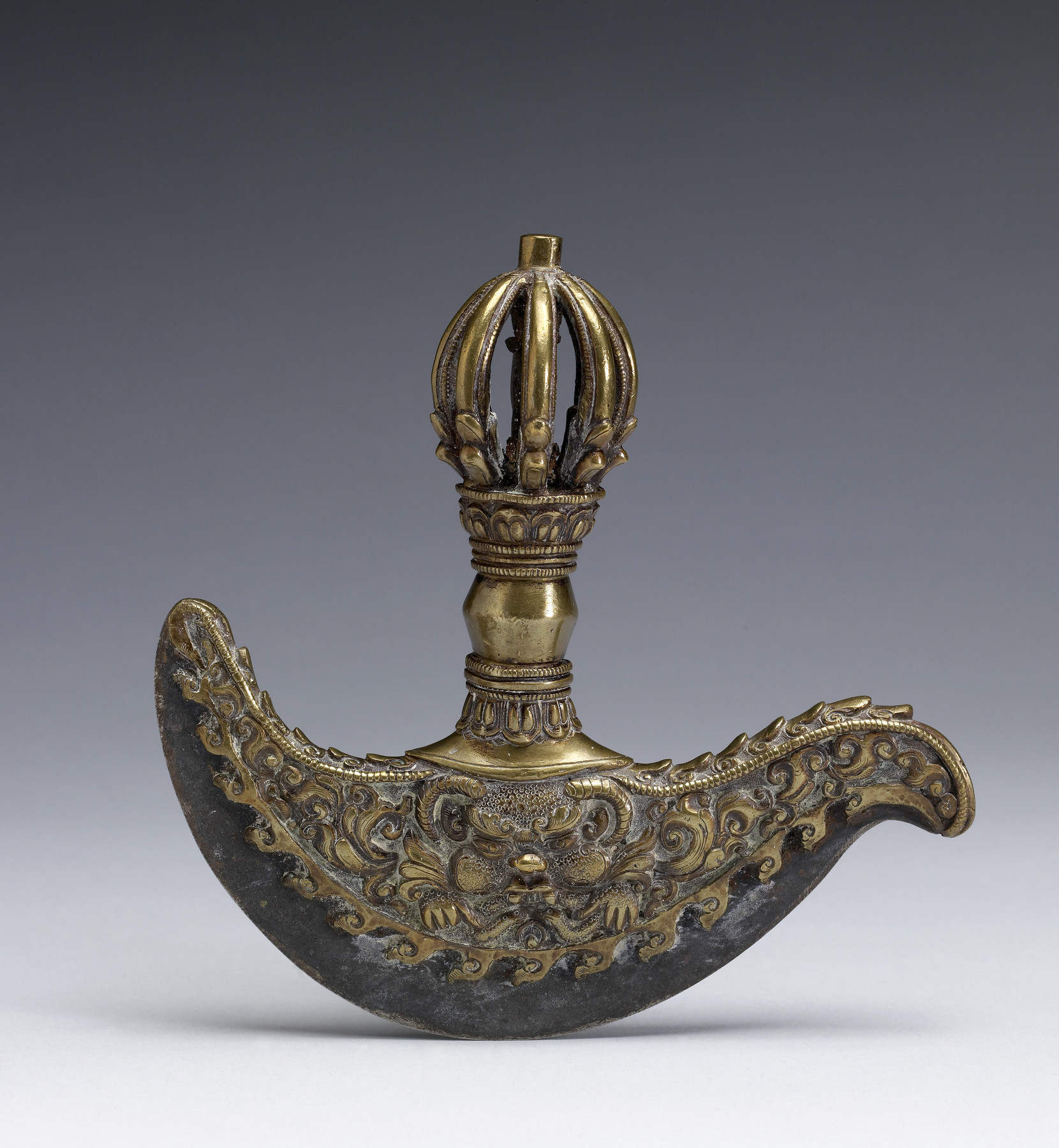Curved Ritual Knife
(India, Nepal, and Tibet)
In Tantric Buddhist traditions, the curved knife is both a common attribute for wrathful deities and a ritual object used symbolically to destroy negative forces. Its form is modeled after an Indian butcher’s knife, with a crescent-shaped blade designed for flaying an animal’s skin and a sharp hook to make the initial incision. As a tool of enlightenment, it severs and strips away the layers of false knowledge inherent to ordinary existence, revealing a greater truth. Its handle has the form of a "vajra," the multipronged scepter used in Tantric Buddhist rituals. The horned animal face depicted in the relief work of this blade enhances the knife’s power, warding off dangerous forces.
Provenance
Provenance (from the French provenir, 'to come from/forth') is the chronology of the ownership, custody, or location of a historical object.
Acquired by Rajumar Tuladhar; purchased by John and Berthe Ford, Baltimore February 9 1968; given to Walters Art Museum, 2016.
Exhibitions
| 2016-2017 | Ferocious Beauty: Wrathful Deities from Tibet and Nepal. |
Geographies
Tibet (Place of Origin)
Measurements
H: 6 7/16 × W: 6 1/2 × D: 1 11/16 in. (16.4 × 16.5 × 4.3 cm)
Credit Line
Gift of John and Berthe Ford, 2016
Accession Number
In libraries, galleries, museums, and archives, an accession number is a unique identifier assigned to each object in the collection.
In libraries, galleries, museums, and archives, an accession number is a unique identifier assigned to each object in the collection.
54.3106




